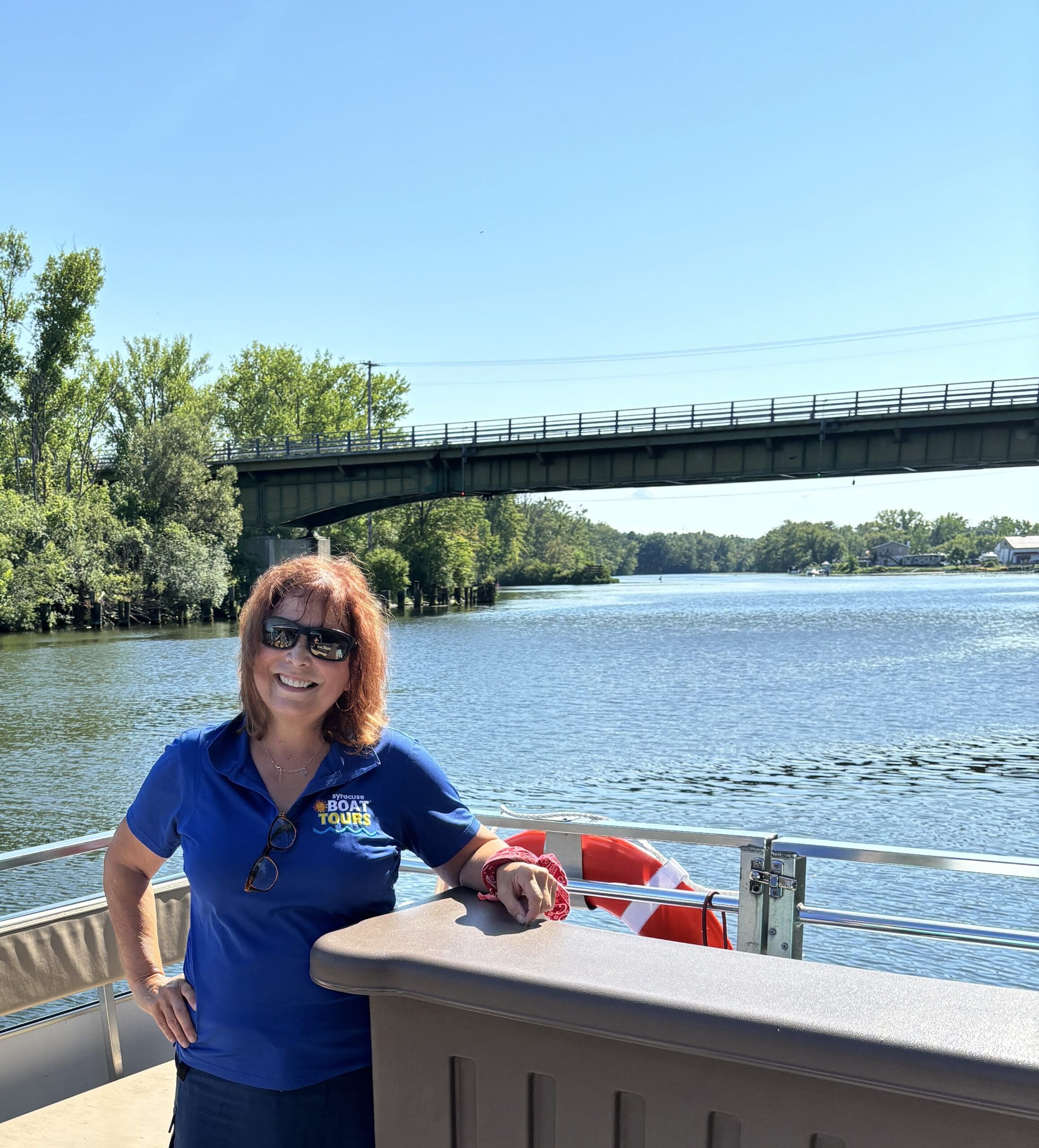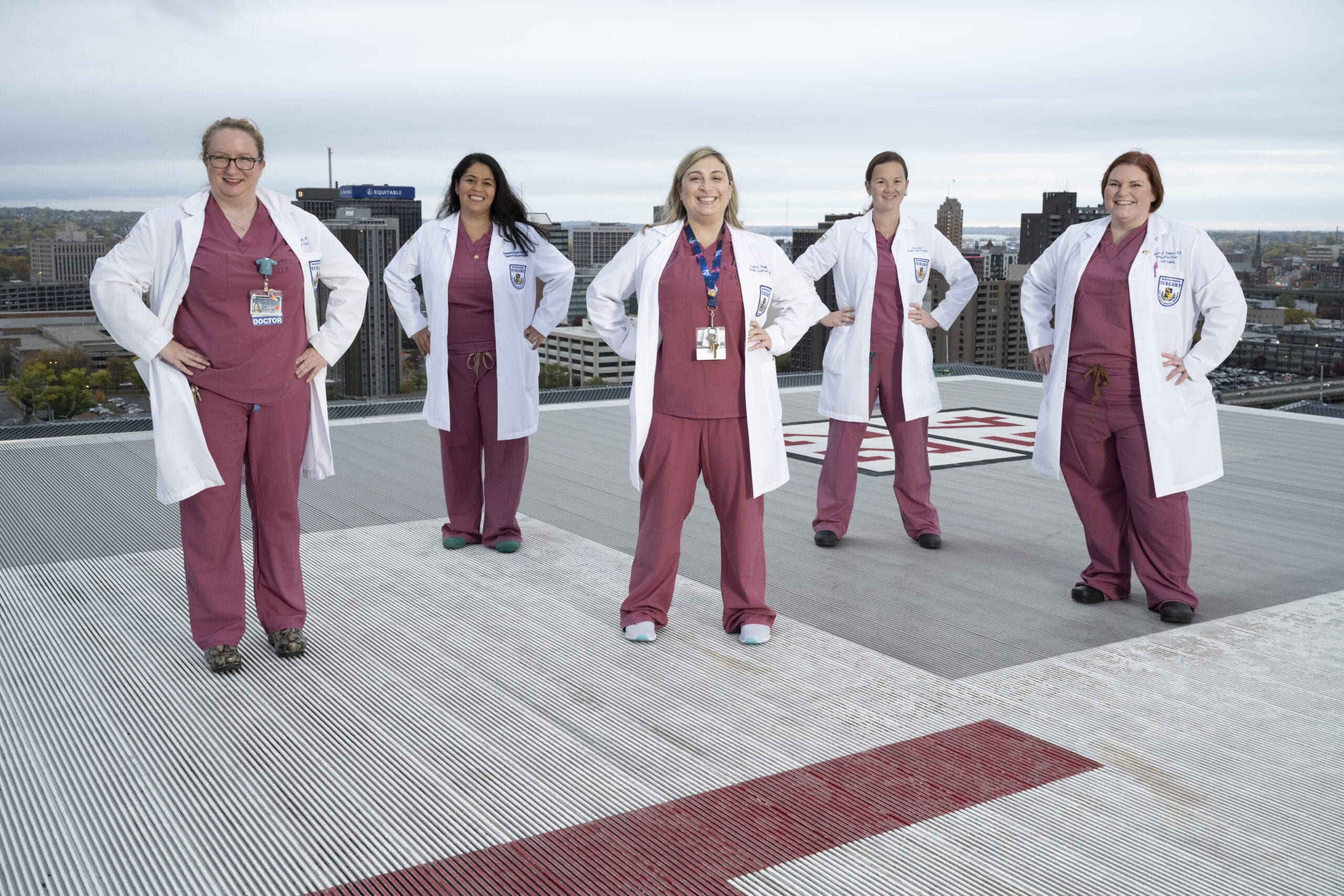Getting Back to the Peak of Health
By Carol Radin | Photography by Alexis Emm
“This isn’t happening to me,” Patti DePaulis told herself.
A successful account executive, marathon runner and weekend mountain climber, she was at her peak physical and mental performance. Patti carried on through a day that started with a four-mile run, sales meeting at work and two-hour service appointment for her car, even though the slackness in her left side and tongue, lack of concentration and extreme fatigue were telling her body to stop. She was having a stroke.
Patti, the inspirational honoree for the American Heart Association, knows she is lucky. She is here. She can look back on the stroke and still look forward.
“At first, you think you will lose yourself,” Patti said. “Things might be a little different, but you can still be the person you know.”
On the day her stroke occurred, Patti started her daily routine. She noticed, though, that her left leg felt odd. The night before, she’d gotten a severe cramp in that leg after her gym workout, something that hadn’t happened before. Then, the next morning, she felt as if it was “swiveling out away” from her. Dressed for running, she paused at the top of her staircase.
“I just looked down and had this sense of, ‘Was I ever going to get down?’” Patti remembered.
It took her five minutes. When she called her dog, her tongue felt “five times its size,” she recalled. She was sure she was slurring her words, but was determined to go on. She made it through both her run and workday. Though she thought she was slurring words at a sales meeting, she second-guessed herself when her colleagues gave no indication something was off.
Finally, after a car service appointment and harrowing drive — the highway appeared to be dropping off to the left, Patti remembered — she went home and collapsed on the sofa. When her husband, Mark, found her there, he immediately took her to the hospital.
The doctor told Patti she’d had a major stroke and had lost function on her entire left side.
Questions raced through her mind. A mother of four grown children, she wondered if she would ever enjoy life with them again. Would she climb the Adirondack peaks with her husband again? Would she even be able to take walks with him again?
“Can I still run?” she asked aloud.
“Patti, you have to run!” the doctor insisted.
It was the answer Patti needed to hear. For the next six months, she threw herself into her physical therapy regimen. Two weeks after the stroke, she got on the treadmill.
“I didn’t care if I scuffed,” she said. “I was going to get on that treadmill.”
Three months later, she was running on the treadmill. She also returned to work shortly after being released from the hospital. Though she floundered at times, she believes the mental and social demands of the job helped restore her concentration.
Above all, she credits her husband — her lifeline, she said — who monitored her food, exercise and medications when she could not. Together, they understood how important it was to Patti that she become a strong woman once again.
For the rest of her life, Patti will have to pay close attention to signs of an oncoming stroke. It can happen to anyone and the risks of paralysis or fatality are very real, she explained.
“What I would tell people is to listen to your body,” she said, “not just to know your body, so that you know when it’s acting differently, but to listen, and act immediately, while you still have your senses. I should have listened to my body that morning while I was in the driveway in my car.”
She shared this acronym for warning signs of a stroke: FAST — face drooping, arm weakness, speech difficulty, time to call 911. In addition, she stressed the value of maintaining good health, physical fitness and healthy eating practices, as well as regularly monitoring cholesterol, blood pressure and other vital functions. Patti regained her function and athleticism at the pace she did thanks to her healthy physical condition prior to the stroke, she said.
Patti is back to running, snowshoeing and climbing. Recently, she and Mark climbed Mount Esther, the 28th highest peak in the Adirondack Mountains. Their goal is to scale all 46 Adirondack High Peaks. Since the stroke and her recovery, Patti’s perspective has changed in positive ways, she said.
“I am grateful,” she said. “Every day, when I open my eyes in bed, I move my hands, I move my feet — I feel so blessed.” SWM
For more information, visit the American Heart Association at heart.org.






So glad to have read your story, Patty. What an inspiration. I’m happy that you are fully recovered and are at the peak of your life once again. I’m a friend of Margie Burstein‘s and therefore, in extension, a friend of yours. Congratulations on the recognition by the AHA and for sharing this slice of your life.